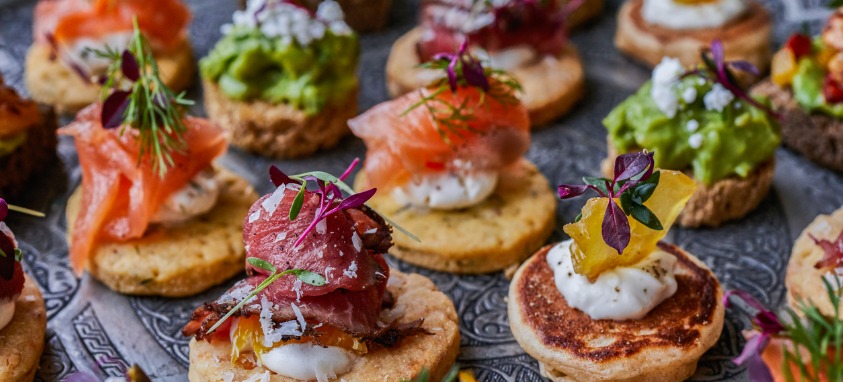When it comes to making an event stand out, anything is fair game to bring to the table — including food.
According to a 2019 study, an event’s food options rank as the second-biggest reason attendees choose an event. That same study found that 80 percent of Americans remember a good eating experience at an event, while 56 percent say they won’t return to an event that served bad food.
More: How to Accommodate Dietary Restrictions
As budgets shrink and food costs rise, it’s tempting to treat food coordination as just another item to check off your event planning to-do list. Instead, delight your guests with stylish dining options that help enhance the overall experience.
Let Food Fuel Your Event Success
When 41 percent of executives say they consider food and drink as top spending items, that means the menu is an opportunity to shine. To bring the best of both to your event, take the following four approaches:
1. Look to the Latest Trends
Try offering organic and locavore options or partnering with a local restaurant to offer unique selections. Serve tapas, which are a tasty and economical option.
If you’re hosting a daytime event, provide zero-proof cocktails that look chic and keep everyone sober. Or for an edgier choice, try infusing your food with CBD. As long as you follow federal regulations, it won’t be intoxicating — just intriguing.
2. Before Hiring a Caterer, Consider the Vibe of Your Event
Is this a black-tie event or a casual beach team building? Pick a provider based on where your event falls on the formality spectrum. Read reviews to evaluate how effective a vendor’s wait staff and cleanup crew are.
You also want the flexibility to accommodate special requests. Be specific about what you need, but allow the caterer to get creative. Ask to taste the food so you can experience what your guests will be eating. Do your due diligence before committing.
3. Use Data to Paint a Picture
A Social Bakers survey found that 56 percent of consumers think businesses should have a deeper understanding of what they need. Data is one resource that can help close that gap.
Use Google Analytics, ticketing platforms, Facebook, and your email opt-in list to learn more about your audience and its food preferences. These outlets maintain the kind of data that helps event planners tweak a menu until it’s ready to be unveiled to the audience.
4. Focus Your Ads on Food
Research shows that consumers remember as little as 10 percent of the information they read, but visual elements boost that rate up to 65 percent. Build food photos into your marketing and advertising strategy to highlight your unique menu.
Show your chefs in action or food trucks lined up on the street outside. Using these visual elements as another arm of your marketing approach will distinguish your event from the rest.
Food should be more than just something to keep people from passing out during the keynote—it needs to be an integral part of the event’s experience. Do the appropriate back-end work to develop a menu that appeals to eventgoers and adds to the aura of your gathering.
Ronnie Higgins works at Eventbrite, helping event planners level-up their registration game. Born and raised in New Orleans, he enjoys nothing more than helping people get together—whether it’s for a conference, class, or a citywide party like Mardi Gras.





